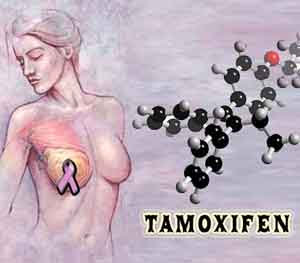It’s time to deal with one of my pet peeves, false promises. Too often, writers on health who should know better make health claims that have no substance in reality. This is true not only of alternative health writers, but of medical doctors as well. As for the mainstream media, they are effectively brain dead when it comes to health and nutrition, have no opinions of their own that they are willing to express, and for the most part, just print what the medical community tells them to anyway, so they don’t really count.
So what kind of false promises am I referring to? I’m talking about absolutes like:
- Use these supplements and you won’t get cancer
- Follow this diet and you will be cured of diabetes — guaranteed
- Conventional treatment for cancer is the only treatment that works
- Detoxing is snake oil
- Chemotherapy cures cancer
- If you smoke cigarettes, you die
Why are these lies? Because when it comes to health, absolutes almost never apply. In Lessons from the Miracle Doctors, I wrote that good health really comes down to ‘playing the odds.’ For example, if you smoke cigarettes, there’s no guarantee that you’re going to get sick and die. We’ve all heard stories of the man who smoked and drank like a fiend for eighty years, was never sick a day in his life, and died at the hands of a jealous husband who shot the old letch when he discovered him in bed with his twenty-year-old wife. These things happen, really — and we’ll talk about a couple of classic examples in a bit. On the other hand, there’s no question that your odds of having emphysema or lung cancer or of having parts of your mouth, lips, and tongue surgically removed increase dramatically if you smoke. It’s all a question of odds — not guarantees, just odds.
In the same way, if you follow the Baseline of Health Program, your odds of having good health and long life are significantly increased… but again, not guaranteed. In addition, your odds of feeling a whole lot better, having more energy, alertness, sexuality, youthfulness, and radiance in the process are also significantly enhanced. As they say in Vegas, “It’s worth a double down.”
So to summarize, when it comes to health, it’s all based on odds, not guarantees. Anyone who tells you that if you take certain supplements you’re never going to get cancer is lying to you. Yes, if you live a certain way, eat a certain diet, and take certain supplements, your odds are better — but not guaranteed. And any doctor who tells you that if you get a flu shot you’re safe from the flu is lying to you. Yes, your odds may be better (actually, only marginally it turns out), but you’re far, far from guaranteed a flu free season.
And yet, promises are made — guarantees are given. People are misled. Let’s take a look at some of these false promises.
Steve Jobs
When Steven Jobs recently passed away from pancreatic cancer, I scrupulously avoided making any comments on it. I believe that unless people voluntarily choose to make their illness a public issue, they have every right to their privacy and to make any decisions they feel best when it comes to dealing with it. Unfortunately, in the current “nothing is private” world in which we live, many health experts felt that Steven’s death was fair game for scoring points. Many writers and commentators in the alternative health community blamed his death on the fact that he ultimately turned to conventional medicine — particularly his decision to opt for a liver transplant. And, not surprisingly, many in the medical community blamed his decision to explore alternatives for several months, thus delaying his use of conventional treatments — the implication being that if he had only exercised the medical options sooner, he’d be alive today.

Nonsense…on both sides! But that said, the greater culpability lies with the medical community. Steven Jobs had pancreatic neuroendocrine cancer. It was diagnosed in 2004, and he had the tumor removed later that year. His seven year survival is right in line with the average numbers for that type of cancer 1, and yet the medical community avers that he only died because he delayed treatment for nine months. Right! Anytime someone opts for an alternative cancer treatment and dies, the medical community is quick to state that the only reason they died was because they chose foolishly. If only they had listened to their doctor, they’d be alive today — guaranteed. This, of course, is nonsense. But even more interestingly, when people do choose conventional treatment and die, no blame is assigned to either the patient or the doctor. Their struggles are labeled “heroic.” It was the damn disease “what done him in.” And the media plays along.
In fact, the media uses a double standard when reporting on medical therapies and alternative therapies. Conventional therapies, even when they fail, as I mentioned, are heroic. Alternative therapies, even when they succeed, are derided. Use an alternative therapy to get well, and it’s called a “spontaneous remission.” Use a conventional therapy and, if you die, you become another iconic story to use in soliciting more research money. 2 Medical doctors can do no wrong; they’re lauded as heroes despite their failures, and they make a lot of money even if their patients die. Meanwhile, alternative practitioners may succeed again and again, and still be considered dangerous quacks. “It was a spontaneous remission. It had nothing to do with the alternative treatment used. And if chemo and radiation are not immediately used while you’re in remission, the cancer will absolutely come back…guaranteed!”
This, of course, is anything but objective, and is contrary to all available data — but it is today’s reality.
With that in mind, let’s take a look at some notable examples of statistical distortion. And as always, since the medical community has so many resources at its disposal, I will play the part of William Garrow 3 and present on behalf of the complementary community.
We’re only talking about odds — not guarantees
 For years, Hugh Hefner was a poster boy for unhealthy living. He was never photographed without his ever present pipe. It was part of his “costume,” along with his silk pajamas and robe. In addition, he had a famous addiction to Diet Pepsi, consuming upwards of 30 cans a day for years on end. 4 According to everything we’ve been promised by both the medical and holistic communities, Mr. Hefner was “guaranteed” cancer of the lip, throat, and tongue — as well as obesity. (Yes, Virginia, diet sodas make you fat.) Where’s the cancer for Mr. Hefner? Where’s the obesity? Instead we have Hugh Hefner in his eighties still cavorting with 24-year-old girls — albeit with the help of Viagra. 5
For years, Hugh Hefner was a poster boy for unhealthy living. He was never photographed without his ever present pipe. It was part of his “costume,” along with his silk pajamas and robe. In addition, he had a famous addiction to Diet Pepsi, consuming upwards of 30 cans a day for years on end. 4 According to everything we’ve been promised by both the medical and holistic communities, Mr. Hefner was “guaranteed” cancer of the lip, throat, and tongue — as well as obesity. (Yes, Virginia, diet sodas make you fat.) Where’s the cancer for Mr. Hefner? Where’s the obesity? Instead we have Hugh Hefner in his eighties still cavorting with 24-year-old girls — albeit with the help of Viagra. 5
And comedian George Burns, who lived to 100, smoked between 10 and 15 cigars a day for 70 years 6 — dying, not from cancer, but from the aftereffects of a fall in his bathtub. He was actually buried with three cigars in his coat pocket. George Burns even requested, as a present for his 100th birthday, “a night with Sharon Stone.” He also liked to drink — with Scotch his beverage of choice. It is said that he smoked and drank right up to the very end. As reported, after relishing the last swallow of his drink, he carefully set the glass down beside his ash tray, made sure his cigar was put out, turned out the lights…and died.
So where’s the guaranteed cancer?
Again, it’s odds. Hugh and George defied them; they didn’t break them. And just because one gambler wins in Vegas doesn’t mean that you will too. More often than not, if you indulge your vices, your health will pay the price.
How the medical community plays with numbers
At first blush, you would think that the alternative health community would be far worse at misusing numbers than the medical community — considering all of the “scientific training” doctors go through. And there is no question but that the medical community understands that health is about odds. That is their training. Their studies almost never report on cures. They report on statistically significant odds. And yet, when it suits their purposes, the community’s mavens play fast and loose with those numbers — and the rest of the community falls unquestioningly into line. And in truth, because they should know better, their culpability is far greater than that of the alternative health community when it comes to making false promises. Let’s take a look at three frequently cited sets of statistics and see how these irrefutable “peer reviewed” numbers are less than they first appear and end up providing false hope.
Statin drugs
The primary study cited in support of statin drugs is the 2008 Jupiter cohort study. 7 In that study, half of the volunteers were given 20 mg of Crestor. (The study was sponsored by AstraZeneca, the maker of Crestor.) The results showed that among those taking Crestor, the rate of heart attacks fell by 54 percent, the rate of strokes dropped by 48 percent, and deaths were reduced by 20 percent, compared with those getting a placebo. As Dr. Christopher Cannon of Brigham and Women’s Hospital said, “The reductions in heart attack and stroke are bigger than anything we’ve ever seen.” In fact, the researchers felt that the benefits were so obvious and overwhelming that they stopped the five-year study after less than two years. Why waste time when the benefit as presented by the numbers is so obvious? Think of the lives that would be lost making people wait for the full run of the study.
The result was that whereas statin drugs were previously only prescribed for secondary prevention — that is, prevention of a second heart attack or stroke for those who had already suffered one or had clear signs of heart disease — after the Jupiter study, doctors began prescribing statin drugs prophylactically, to prevent any heart attacks. And in just three short years, we have come to the point where, today, a majority of people take statin drugs for primary prevention, i.e. to prevent a first heart attack or stroke in people who have certain risk factors of heart disease (primarily high cholesterol levels), but are otherwise healthy.
But how “absolute” are these numbers?
 When talking about peer reviewed medical studies, I am often reminded of the quote attributed to Benjamin Disraeli, “There are three kinds of lies in the world: lies, damn lies, and statistics.” The Jupiter Study cites as the primary benefit of statin drugs a drop in the rate of heart attacks from 1.36 heart attacks per 100 person-years for those using placebos to a 56% lower rate of .77 heart attacks per 100 person-years for those on Crestor. That certainly sounds impressive at first glance, but there’s another way to look at the study’s numbers. 17,802 people participated in the study. During the course of the study, 251 people using placebos had heart attacks whereas 141 on Crestor had heart attacks. Percentagewise, though, that works out to a mere 1% of participants who had heart attacks whichever program they were on (. 8% rounded up to 1% for those on Crestor and 1.4% rounded down for those using the placebo). That means putting people on drugs that damage their livers and muscle tissue for what amounts to a rounding error. This is especially concerning when you consider that there are far less harmful ways to achieve the same results…and more?
When talking about peer reviewed medical studies, I am often reminded of the quote attributed to Benjamin Disraeli, “There are three kinds of lies in the world: lies, damn lies, and statistics.” The Jupiter Study cites as the primary benefit of statin drugs a drop in the rate of heart attacks from 1.36 heart attacks per 100 person-years for those using placebos to a 56% lower rate of .77 heart attacks per 100 person-years for those on Crestor. That certainly sounds impressive at first glance, but there’s another way to look at the study’s numbers. 17,802 people participated in the study. During the course of the study, 251 people using placebos had heart attacks whereas 141 on Crestor had heart attacks. Percentagewise, though, that works out to a mere 1% of participants who had heart attacks whichever program they were on (. 8% rounded up to 1% for those on Crestor and 1.4% rounded down for those using the placebo). That means putting people on drugs that damage their livers and muscle tissue for what amounts to a rounding error. This is especially concerning when you consider that there are far less harmful ways to achieve the same results…and more?
And the numbers I’m presenting to you are no aberration. A large clinical study on Lipitor found that 3% of patients taking a sugar pill or placebo had a heart attack compared to 2% of patients taking Lipitor. Again, as with Crestor, that works out to a difference of one heart attack per hundred people.
And those numbers are probably “optimistic,” to put it politely.
Since the Jupiter Study, a number of medical authorities have refuted its results. Specifically, they have challenged the fundamental premise that statin drugs prevent death. Yes, they may mildly reduce your risk of having a second heart attack, but that doesn’t necessarily translate into fewer deaths. As one “critical reappraisal” published in the Archives of Internal Medicine 8 put it, “Clinical data showed a major discrepancy between significant reduction of nonfatal stroke and myocardial infarction but no effect on mortality from stroke and myocardial infarction.” And that was the kind part of their assessment. In their conclusion, they stated, “The results of the trial do not support the use of statin treatment for primary prevention of cardiovascular diseases and raise troubling questions concerning the role of commercial sponsors.” (As mentioned earlier, AstraZeneca sponsored the Jupiter Study.)
And these results were confirmed by a meta-analysis of 11 randomized controlled trials involving 65,229 participants that was published in the same issue of Archives of Internal Medicine. 9 Their conclusion quite simply stated that they “did not find evidence for the benefit of statin therapy on all-cause mortality in a high-risk primary prevention set-up.” In other words, they could find no evidence to support the use of statin drugs to prevent first heart attacks — today’s primary use for those drugs.
In the end, all of the benefits attributed to statin drugs as a preventative therapy comes down to numbers slight-of-hand.
Tamoxifen
In 2005, The Lancet published the Oxford University study that supported the use of chemotherapy and concluded that women who used tamoxifen for five years reduced their chances of breast cancer death by one-third. 10 Exciting!
This reconfirmed the National Cancer Institute’s Breast Cancer Prevention Trial, which was published in 1998 and reported that there was a 49 percent decrease in the incidence of breast cancer in women who took tamoxifen for five years. 11 These are stunning numbers. If your doctor told you that using tamoxifen cut your chances of getting breast cancer by 49%, would there be any question in your mind on whether or not to use it? Not in mine — at least until I talked to Benjamin Disraeli. If you look past the statistics as presented, the truth is that according to the study, your odds of getting breast cancer without using tamoxifen were only 1.3%, and with tamoxifen they dropped to .68%. That represents a 49% difference between the two numbers (as cited), but just a little over a one-half of one-percent difference (.62%) in real terms.
 And for that meager sixth-tenths of one-percent difference, we now need to consider that tamoxifen can cause cancer of the uterus, ovaries, and gastrointestinal tract. In addition, a study at Johns Hopkins found that tamoxifen promotes liver cancer, 12 and in 1996, a division of the World Health Organization, the International Agency for Research on Cancer, declared tamoxifen a Group I carcinogen for the uterus. And the National Institutes of Health has declared it a “known human carcinogen.” 13 In another NCI study, abruptly curtailed as it turns out, 33 women that took tamoxifen developed endometrial cancer, 17 suffered blood clots in the lungs, 130 developed deep vein thrombosis (blood clots in major blood vessels) and many experienced confusion, depression, and memory loss. 14 Other permanent damage includes osteoporosis, retinal damage, corneal changes, optic nerve damage, and cataracts. And then of course, there’s the 2009 study published in Cancer Research that found that long-term use of tamoxifen, although it reduced the risk of the most common, easy to treat cancer from recurring by some 60 percent, increased your chances of getting aggressive cancer in the other breast by an astounding 440 percent. 15
And for that meager sixth-tenths of one-percent difference, we now need to consider that tamoxifen can cause cancer of the uterus, ovaries, and gastrointestinal tract. In addition, a study at Johns Hopkins found that tamoxifen promotes liver cancer, 12 and in 1996, a division of the World Health Organization, the International Agency for Research on Cancer, declared tamoxifen a Group I carcinogen for the uterus. And the National Institutes of Health has declared it a “known human carcinogen.” 13 In another NCI study, abruptly curtailed as it turns out, 33 women that took tamoxifen developed endometrial cancer, 17 suffered blood clots in the lungs, 130 developed deep vein thrombosis (blood clots in major blood vessels) and many experienced confusion, depression, and memory loss. 14 Other permanent damage includes osteoporosis, retinal damage, corneal changes, optic nerve damage, and cataracts. And then of course, there’s the 2009 study published in Cancer Research that found that long-term use of tamoxifen, although it reduced the risk of the most common, easy to treat cancer from recurring by some 60 percent, increased your chances of getting aggressive cancer in the other breast by an astounding 440 percent. 15
In short, the half percent of those who receive a reduction in breast cancer by using tamoxifen trade it for an increase in other cancers and life threatening diseases. A half percent in real world terms is vastly different from the 49% “statistic-ed” improvement cited in the studies — and hardly worth the increased risk.
Flu shots
I have talked many times before about the ineffectiveness of flu shots. In fact, the vast majority of support for flu vaccines in the medical community is based on one single set of studies, the Cohort Studies on the effectiveness of the seasonal flu vaccine. These studies found a 50-90% effectiveness rate for the vaccine and are cited as gospel by doctors all over the world and by medical experts on television. However, even a casual examination of these studies reveals their absurdity. (It should be noted that probably over 90% of the doctors who cite these studies have never actually read them. They merely parrot the results they have heard second, third, and fourth hand.) The Atlantic Monthly16 wrote a great article eviscerating them. Their conclusion was that the flu vaccine Cohort Studies are rendered irrelevant by the bias of the cohort selection. Consider:
- Because it’s virtually impossible to identify who has the flu and who doesn’t, the researchers identified their cohort as those who died from all causes (flu, coronary events, lightning strikes, accidents, whatever) and then broke that into two: those who had received the flu vaccine and those who hadn’t. These studies showed a “dramatic difference” between the death rates (again, from all causes) of those who got the vaccine VS those who didn’t (50-90% less depending on the study cited).
- But according to the National Institute of Allergy and Infectious Diseases, deaths from influenza account for — at most — 10 percent of total deaths during the flu season. And yet the studies found that receiving a flu vaccine reduced total deaths by 50 percent — five times the total number of flu deaths. (Can you see the problem here?)
- According to Dr. Tom Jefferson of the Cochrane Collaboration, “For a vaccine to reduce mortality by 50 percent, and up to 90 percent in some studies, means it has to prevent deaths not just from influenza, but also from falls, fires, heart disease, strokes, and car accidents. That’s not a vaccine, that’s a miracle.”
- And as icing on the cake, there was also no difference in mortality rates based on whether the deaths occurred in flu season or out of it. Truly, a miraculous vaccine!
And yet, it is this absurdly flawed set of studies and statistics that virtually every physician hangs their hat on when promoting the efficacy of flu vaccines — even if they themselves have never read them.
Chemotherapy numbers
Chemotherapy drugs, at least those that have actually been studied are all by the numbers. Doctors can tell you, for example, that if you use certain chemotherapy drugs after surgery for stage 3 colon cancer (where some spreading to the lymph nodes has been found), you can reduce your odds of recurrence from 60% to 45%. The problem is that 15% “improvement” doesn’t necessarily mean what you probably think it means. Most people would think that means that everyone who uses the drugs receives a 15% benefit.
Not exactly.
What it actually means is that approximately one in every six people who use the drugs will avoid a recurrence that they might otherwise have had. Five out of six people will notice no difference at all — other than the side effects. If they were going to survive without the chemotherapy drugs, they’ll still survive. And if they were going to relapse without the drugs, they’re still going to relapse with them. For five out six people, there are only side effects.
And what kind of side effects are we talking about in exchange for a one in six shot at avoiding relapse? For starters
- Low blood counts; red, white, and platelets — which can last for years after the chemotherapy is over
- Signs of infection – fever, chills, cough, sore throat or difficulty passing urine
- Nausea and vomiting
- Blood clots
- Heart disease
- Kidney or lung disease
- Breathing problems or changes in vision
- Severe headaches
- Sudden numbness or weakness of the face, arm, or leg
- Symptoms of stroke and trouble passing urine
- Trouble walking, dizziness, loss of balance or coordination
- Unusually weak or tired
- Breathing problems
- Kidney disease
- Heart disease
- Heart failure
- Lung disease
- Brain damage
- Bleeding or blood disorders
- Extreme sensitivity to cold, which may be permanent
When viewed in this way, the odds don’t look quite as good as a 15% improvement across the board.
Conclusion
So everyone’s telling “porky pies.” What’s the big deal? I mean, if we know that everyone is exaggerating and stretching the truth, what does it matter? Can’t we just filter out the noise and get on with it?
Unfortunately, that’s not as easy as it sounds. And more importantly, it does matter. It matters because all the noise and distortion make it that much harder for people to make informed decisions.
- When a natural health resource claims that “all” medical treatments for cancer are inappropriate, they stop people from making use of some of those treatments when the odds favor their use. Surgically, removing cancerous tissue from the colon before it spreads, for example, oftentimes ends the cancer there — indefinitely.
- Denying the efficacy of “all” vaccinations and claiming that all vaccinations are harmful can cause people to reject those vaccinations that are actually helpful and whose benefits outweigh their risks. The truth behind vaccination is far more nuanced than the positions staked out by the opposing camps.
- On the other hand, claiming that flu vaccines provide 90% protection and that naturalimmune boosters and pathogen destroyers do not work can give people a false sense of security and cost them the ability to prevent illnesses that may prove fatal.
- Telling people that diet and environment had no effect on the incidence of cancer, a position held by the American Cancer Society for many years, cost hundreds of thousands, if not several million lives. Now, of course, they are all over the diet and environment bandwagon — but often inaccurately.
The simple truth is that the world of health is not based on absolutes. It is based on nuance, on shades of gray, and on odds. Some things improve those odds, and some make them worse. You can smoke, and you can drink, and you can live on fast food; and you may still live to a ripe old age. It’s all a question of odds. Or as Dirty Harry was fond of saying, “You’ve got to ask yourself one question: Do I feel lucky? Well, do ya, punk?” And if you don’t beat the odds, you die.
Or, on the other hand, instead of playing the long shot, you can set the odds in your favor by using modern medicine for those things that it does well and holistic medicine for those things it does well. To distill this argument to its essence: if I’m involved in a major car accident, I don’t really want to go to an herbalist. I want a surgeon. Then again, why would I want to go to someone who thinks hospital food is healthy (a medical doctor) for advice on diet and nutrition? I’d much rather ask someone who actually walks the talk.
And if you really want to stack the deck in your favor, try living the Baseline of Health. It’s the royal flush of health.

- 1.“Pancreatic cancer survival by stage.” American Cancer Society. 1 Dec 2011. (Accessed 5 Dec 2011.) <http://www.cancer.org/Cancer/PancreaticCancer/DetailedGuide/pancreatic-cancer-survival-rates>
- 2.“The Lustgarten Foundation for Pancreatic Cancer Research Expresses Condolences for the Loss of Steve Jobs.” Cure Pancreatic Cancer. 6 Oct 2011. (Accessed 5 Dec 2011.) <http://www.lustgarten.org/Page.aspx?pid=1067>
- 3.Amanda Cable. “Garrow’s guilty secret.” Mail Online. 6 Dec 2011. (Accessed 6 Dec 2011.) <http://www.dailymail.co.uk/femail/article-1333067>
- 4.Jessica Seigel (interview). “Hugh Hefner at the Mansion: The original Playboy reflects on the pajama game of life.”JessicaSeigel.com 8 Oct 1992. (Accessed 5 Dec 2011.) <http://jessicaseigel.com/articles/hefner.shtml>
- 5.“Hugh Hefner Has Sex Twice A Week, Playmates Describe Orgies.” Huffington Post. First Posted: 07/12/10 Updated: 05/25/11. (Accessed 5 Dec 2011.) <http://www.huffingtonpost.com/2010/07/12/hugh-hefner-i-have-sex-tw_n_643303.html>
- 6.Arthur Marx. “The Ultimate Cigar Aficionado: Ninety-eight-year-old George Burns shares memories of his life.” 1 Dec 1994.Cigar Aficionado. (Accessed 5 Dec 2011.) <http://www.cigaraficionado.com/webfeatures/show/id/The-Ultimate-Cigar-Aficionado_6004>
- 7.Paul M Ridker, Eleanor Danielson, Francisco A.H. Fonseca,Jacques Geneste et all for the JUPITER Study Group. “Rosuvastatin to Prevent Vascular Events in Men and Women with Elevated C-Reactive Protein.” N Engl J Med 2008; 359:2195-2207 <http://www.nejm.org/doi/full/10.1056/NEJMoa0807646#t=articleTop>
- 8.de Lorgeril M, Salen P, Abramson J, Dodin S, Hamazaki T, Kostucki W, Okuyama H, Pavy B, Rabaeus M. “Cholesterol lowering, cardiovascular diseases, and the rosuvastatin-JUPITER controversy: a critical reappraisal.” Arch Intern Med. 2010 Jun 28;170(12):1032-6. < http://www.ncbi.nlm.nih.gov/pubmed/20585068>
- 9.Ray KK, Seshasai SR, Erqou S, Sever P, Jukema JW, Ford I, Sattar N. “Statins and all-cause mortality in high-risk primary prevention: a meta-analysis of 11 randomized controlled trials involving 65,229 participants.” Arch Intern Med. 2010 Jun 28;170(12):1024-31. <http://www.ncbi.nlm.nih.gov/pubmed/20585067>
- 10.Early Breast Cancer Trialists’ Collaborative Group. “Effects of chemotherapy and hormonal therapy for early breast cancer on recurrence and 15-year survival: an overview of the randomised trials.” The Lancet, Volume 365, Issue 9472, Pages 1687 – 1717, 14 May 2005. <http://www.thelancet.com/journals/lancet/article/PIIS0140-6736(05)66544-0/abstract>
- 11.Bernard Fisher, Joseph P. Costantino, D. Lawrence Wickerham, Carol K. Redmond, et al. “Tamoxifen for Prevention of Breast Cancer: Report of the National Surgical Adjuvant Breast and Bowel Project P-1 Study.” JNCI J Natl Cancer Inst (1998) 90 (18): 1371-1388. <http://jnci.oxfordjournals.org/content/90/18/1371.full>
- 12.Williams Gm, Iatropoulos Mj, Djordjevic Mv, Kaltenberg OP. “The triphenylethylene drug tamoxifen is a strong liver carcinogen in the rat.” Carcinogenesis 1993; 14: 315-317. <http://www.ncbi.nlm.nih.gov/pubmed/8435874>
- 13.National Toxicology Program, Department of Health and Human Service, ” Report on Carcinogens, Twelfth Edition (2011).” 393-395. <http://ntp.niehs.nih.gov/ntp/roc/twelfth/profiles/Tamoxifen.pdf>
- 14.“The Study of Tamoxifen and Raloxifene (STAR): Questions and Answers.” National Cancer Institute. 17 April 2006. (Accessed 4 Dec 2011). <http://www.cancer.gov/newscenter/qa/2006/starresultsqandA>
- 15.Christopher I. Li, Janet R. Daling, Peggy L. Porter, Mei-Tzu C. Tang, and Kathleen E. Malone. “Adjuvant Hormonal Therapy for Breast Cancer and Risk of Hormone Receptor–Specific Subtypes of Contralateral Breast Cancer.” Cancer Res September 1, 2009 69:6865-6870 <http://cancerres.aacrjournals.org/content/69/17/6865.full?sid=e79edbc4-7c88-4c5d-8c43-b408a6eae5c0>
- 16.Shannon Brownlee and Jeanne Lenzer. “Does the Vaccine Matter?” The Atlantic. November 2009. Accessed 7 July 2011. <http://www.theatlantic.com/magazine/archive/2009/11/does-the-vaccine-matter/7723/>












Well written article on a
Well written article on a great topic. We all need to beat the odds, and can, if we choose healthier options. It starts with our health, or lack of healthy choices. I choose to live! How about you?
Though I agree with your
Though I agree with your general observations about the misleading nature of many studies, I find your use of absolute risk reduction rather than relative risk reduction unconvincing. You point to the Lipitor study that showed a reduction from 3 heart attacks to 2 per hundred people as insignificant. Well let’s say that Lipitor – or any other treatment modality – was found to completely eliminate the risk of heart attacks. In that study group there would still only be a benefit to 3 of the hundred people, yet the promise of eliminating heart attack risk entirely would no doubt induce most everyone to take Lipitor – as well it should. Reducing one percent of a population’s heart attacks would save thousands of lives a year.
You could easily choose to ridicule any natural treatment as well based on absolute vs relative risk. Yet you don’t.
Ah, Herb, that's a good
Ah, Herb, that's a good observation. However, you just made the same "logical" but incorrect assumption that the promoters of statin drugs make — that a reduction in heart attacks equates to a reduction in mortality. Unfortunately, what the studies show is that, unless you've already had a heart attack, the net effect of using statin drugs as a prophylactic produces a zero percent change in mortality — and that's in both absolute and relative terms. Thus reducing "one percent of a population's heart attacks" would not save thousands of lives a year as you suggest. It would, according to the medical community's own studies, save zero lives a year. And that's not ridiculing the studies; it's actually citing what they say — not what the pharmaceutical companies would have you believe they say.
You might want to reread that section of the newsletter again.
Hope that helps.
You conveniently forgot to
You conveniently forgot to enumerate the numerous risks associated with statins which, when known, greatly decrease their minimal advantage. Citing results as relative is highly misleading as most people do not understand the difference. Even doctors forget that.
Relative is what sells. Seems as if everybody will be on statins someday for one reason or another.
Hi Jules:
Jon didn’t forget
Hi Jules:
Jon didn’t forget to enumerate the risks associated with statins. The article wasn’t about statins; it was about how numbers and odds are manipulated to convince people of things that aren’t real. Statins were used as one example. If you want more information about the dangers of statins, you might want to check out Jon’s article “Cholesterol Drugs Do More Harm than Good.” Then again, you complain that Jon is hiding the risks associated with statin drugs, whereas the comment just above yours claims that Jon is understating their benefits. I’ve got to think he must be doing something right if he’s upsetting both ends of the spectrum.
I seem to understand the
I seem to understand the point that Jon addresses. Anyway, I was deeply moved by the part “Tamoxifen” as my wife had a breast cancer, and was under Tamoxifen for 5 years – she was just relieved recently by her physician from this habit. I will have she reading this part. I thank you for all.
Great article. However, Dr.
Great article. However, Dr. Barron where did you get the figure than an average survival rate for pacreatic cancer is 7 years. THe reference you gave only indicate a few percent survival rate , lived longer than 5 years.
Read down the referenced
Read down the referenced webpage further, to where it talks about neuroendocrine pancreatic cancer, the type that Seven Jobs had, and you will see that over 50% with Stage 1 or 2 survive at least five years.
I understand the statistics
I understand the statistics not being what they think they are. Eventually we will all die, no escape. I was wondering how you would perceive a long, healthy life that “beat the odds” and what you think a quality death would be? (If we eat healthy, what are we supposed to die from and when – and how would you know/prove that?).
I enjoy your newsletters.